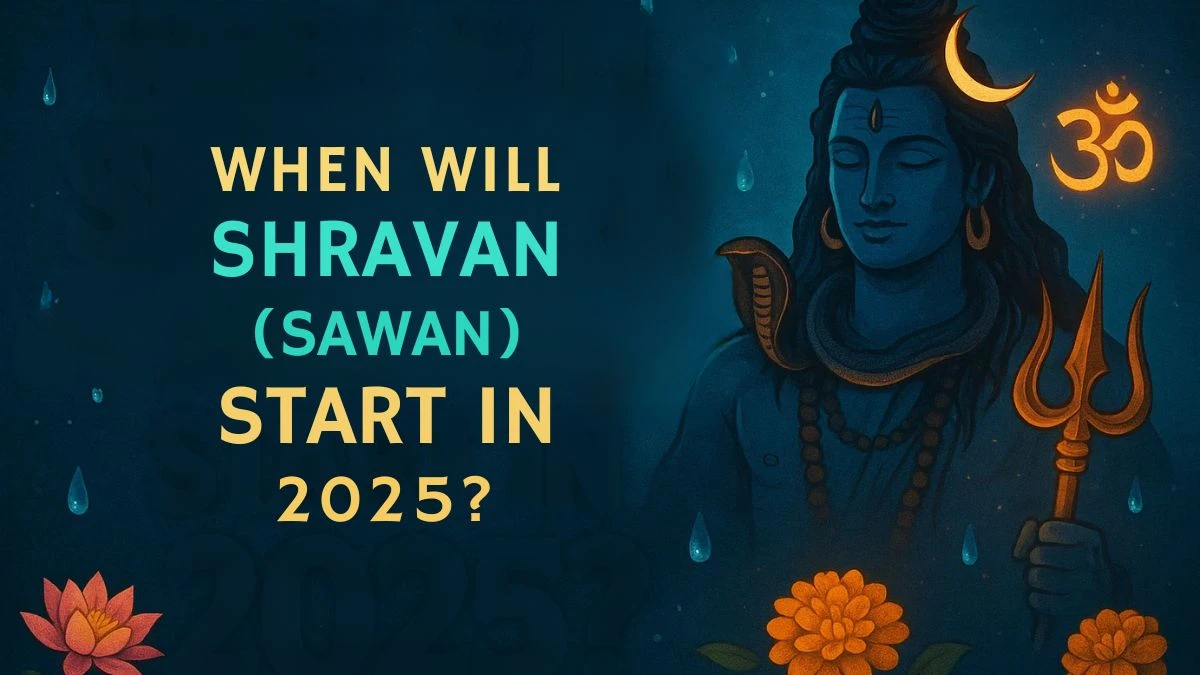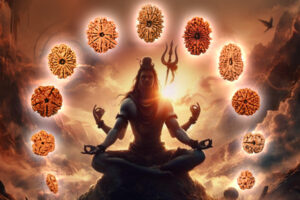“रुद्राय नीलकंठाय मृत्युंजयाय सर्वेश्वराय सदशिवाय श्रीमान महादेवाय नमः”
“Salutations to Rudra, the Blue-Throated One, the Conqueror of Death, the Lord of All, the Eternal and Auspicious Shiva”

Shravan Month (July-August) is revered as the most auspicious month among all. During Shravan Maas, the cosmos is charged with Shiva tattvas (Shiva elements), which purify the mind, senses, body, and soul through dedicated rituals to Lord Shiva.
This month, known as Avani in Tamil scriptures, marks the fifth month of the Solar year. As per Vedic astrology, Shravan Maas begins when the Sun enters the Zodiac Sign: Leo (Simha Rashi). During each Purnima of this auspicious month, the celestial realm is governed by Shravan Nakshtra, the birth star of Lord Vishnu, thus earning the name ‘Shravan.’ Each day during this time is auspicious for worshipping Shambhu (Shiva), and devotees perform prayers and Vedic rituals in Lord Shiva temples to seek His blessings.
In 2025, Shravan Maas begins on July 11, 2025, Friday, and concludes on August 16, 2025, Saturday in North India as per Purnimanta Calendar. Conversely, it differs from region to region please check Sawan (Shravan) Auspicious Dates and Muhurats to know more.
Shravan Month Importance | Significance of Sawan Maas
Shravan Maas is the first month of the Chaturmas period, which consists of four months (Shravan, Bhadrapada, Ashwin, and Kartik) dedicated to bhakti and revering the Divine. According to scriptures, during this period, Lord Vishnu enters Yoga Nidra (a state of deep meditation) on Adi Shesha (the seven-hooded serpent) beneath the Kshirasagara (cosmic ocean), while Lord Shiva takes care of the entire creation.
We can interpret this as the preservation and nurturing aspect of life (governed by Lord Vishnu), making way for destruction (Lord Shiva). Ultimately, the old must give way to the new, so creation, nurturing, and destruction remain an endless cycle. Devotees follow a strict sattvic lifestyle and engage in devotion and worship to seek blessings and protection from the Divine Bhagwan Shiva during this period.
It was in the Shravan month when the search for Amrit started, also known as Samudra Manthan, which is the Churning of the Milky Ocean. During this time, 14 types of Jewels emerged from the ocean. Out of these fourteen, 13 were divided among the Asuras and the Devas. However, the 14th Jewel, Halahal, remained untouched due to it being the deadliest poison capable of destroying the entire universe.
Lord Shiva then drank the Halahal and stored it in his throat, causing his throat to appear blue in color. From then on, he was also known as Neelkantha. All the Devas then started pouring water from the holy river Ganga to reduce the effect of the poison. They offered Bel Patra & Dhatura to Shiva as Medicine. Parvati Mata held the throat of Lord Shiva so that the poison doesn’t spread. All Ganas and Shiva Devotees spend the entire time singing praises to Bhagwan Shiva to give him the strength to overcome this poison.
Another narrative is that Markandeya, the son of Markandu Rishi, received the grace of Shiva in the month of Shravan for longevity as He composed the Mahamrityunjaya mantra. Thus, this month devotees fast to receive good health throughout the year.
Also it is said that in this month, Lord Shiva visits His in-laws place and is welcomed with offerings. Thus it is the best time to receive His benevolent grace.
All of these events took place in the month of Shravan, making it highly auspicious.
Importance of Wearing Rudraksha in Shravan Month.
Rudra means Bhagwan Shiva & Aksha means Tears, Rudraksha are a gift from Bhagwan Shiva to Humankind to help them manifest their material & spiritual aspirations. Those dedicated to Lord Shiva consider wearing Rudraksha beads particularly auspicious during Shravan Maas. Mondays hold special significance throughout the year as they are dedicated to Lord Shiva. However, Mondays falling within Shravan Maas are considered exceptionally auspicious and are observed with heightened devotion, often involving fasting or specific religious practices. Rudraksha holds potent energies and wearing them during Shravan Maas amplifies the benefits multifold when compared to any other time of the year.
Check More Posts
Krishna Janmashtami 2025: Date, Time, History, Rituals & Celebration Guide



